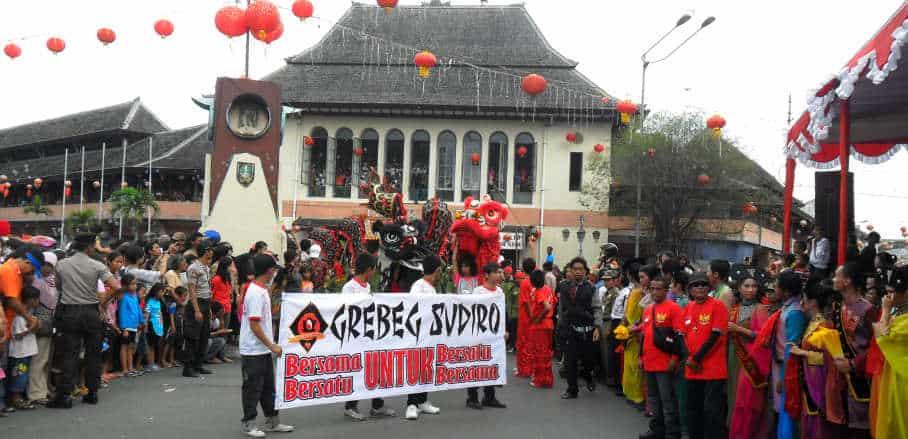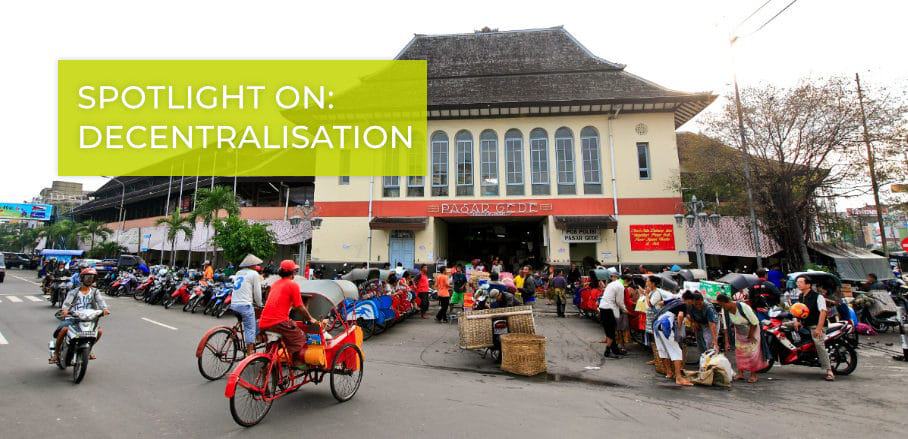More Inclusive Cities for a Better Urban Future: Participatory Planning in Indonesia
Participatory budgeting in Indonesia is not new, but policy makers still rarely consult with citizens on large-scale urban projects – even though it leads to better and more sustainable results. John Taylor and Ahmad Rifai make a strong case for embracing people-based budgets.
“Participatory budgeting has transformed our village’s water sources into good business for us. The children’s pool and water park has helped create jobs and a village enterprise for us, we can all share in the profits.”
Junaedi Mulyono is the village head of Ponggok Village, in the Municipality of Klaten, Central Java, Indonesia. Participatory budgeting in this village of a little over 2,000 inhabitants has made a big splash because it provided citizens with resources and the opportunity to decide what projects to invest in.
This led them to transform their water springs into something many can benefit from. Since 2017, the village started to invest in building a diving and swimming pool to attract visitors. These businesses have since generated eighty jobs and more than a million dollars of revenue.
Indonesia’s History with Participatory Budgeting
Participatory budgeting is not new to Indonesia. It was first adopted by a handful of cities twenty years ago. Known locally as musrenbang – a term that blends three separate words, musyawarah (a community consensus-building meeting), perencanaan (planning, but also understood as budgeting) and pembangunan (development) – it involves local governments providing funds for citizens to put forward and vote on priority projects for the coming budgetary cycle.

Musrenbang Kelurahan. Participatory budgeting discussions happen annually at the neighbourhood level © Kota Kita
In 2004, a national law, Law 25/2004, made it possible for any city to implement this democratic way of allocating cities’ development budget. But the policy didn’t become popular right away. Early scepticism came from professional planners and officials who felt it gave too much decision-making power to those who didn’t understand urban infrastructure or urban planning. As a result, participatory planning and budgeting operated at a small scale with limited funding, for its first 18 years of existence.
Over time, however, participatory budgeting gained greater momentum. From 2014 on, Village Law No. 6 has empowered the National Assembly to allocate 100,000 US Dollars to every village in the country. This extended participatory budgeting to nearly 75,000 villages, putting over 8 billion US Dollars worth of resources into the hands of villagers to discuss and identify projects that address their own persistent issues, and transform their villages.
Four years later, in 2018, the National Government expanded this approach to cover urban areas too, allocating 215 million US Dollars to fund local development projects at the neighbourhood-level. Now participatory budgeting is able to function in both villages and urban neighbourhoods, a policy that extends across the whole country.
The Other End of the Spectrum
Alternatively, what happens when citizens are not involved in urban development projects? Over the last five years the Indonesian government has spent billions on large-scale urban projects, with little or no public consultation. In Jakarta, an estimated two billion US Dollar was spent on infrastructure for the 2018 Asian Games alone. In 2019, 200 million US Dollars were spent on flood management projects in Jakarta which have a reputation for displacing residents and causing upheaval to local neighbourhoods.
Where consultation does occur, it is usually focused on negotiating compensation; rarely are citizens asked about whether projects are needed or how they should be designed. Instead, residents are required to move to make way for projects, having to reluctantly, sometimes forcibly, uproot and be moved on to an uncertain future.
Public consultation, on the other hand, adds legitimacy: when the public is involved in decision-making, the result is generally more accepted and popular because people feel their voices have been heard and they understand why a project is chosen, or not chosen. Thus, projects end up being more sustainable as they are more accepted by the communities where they are located; they are also likely to bring more benefits to more people.

The annual Pasar Gede Festival in Solo, with activities funded by participatory budgeting © Kota Kita
The City of Solo – Participatory Budgeting at its Best
The city of Solo, in Indonesia, is one of the pioneering cities to practice participatory budgeting, and it has done so for nearly two decades now. Every year in each of the 55 neighbourhoods, or kelurahan, citizens meet to discuss their needs and what projects might help to improve their surroundings. Citizens have come to feel that it is their responsibility to talk, discuss community conditions, and come to a consensus on a shared vision, while being a part of the planning process. The amount of money is not significant, in fact it only represents one per cent of the city budget, amounting to perhaps 10,000 to 25,000 US Dollars per neighbourhood per year. But these funds have contributed to progressively improve drainage, waste management, and the hosting of cultural events.
Thus, where participatory budgeting is practiced, citizens feel it is their civic duty to discuss their own priorities; and city governments are proactive about managing an accountable and responsive process. The results are generally more positive.
In this regard, the NGO Kota Kita has been supporting participatory budgeting in Solo for over a decade, filling knowledge gaps about the city and supporting the process. By creating neighbourhood-level maps and information resources, called Mini Atlases, Kota Kita helps residents identify for themselves problems and highlight deficiencies. By providing information, residents can put into context why they might prioritise one issue or investment over another. It helps them to be more informed and contribute to more thoughtful discussion about their shared resources. Another key to a successful process is effective facilitation, managing local discussions, bringing forth different views, and ensuring that community members participate and share their ideas, and that the community can come to a consensus. Both elements – access to information, and capable facilitation – are essential to the success of the process.

People participate in Musrenbang using the information tool ‘Mini Atlas’ to understand issues in their neighbourhood © Kota Kita
The Future of Urban Development
Participatory budgeting and planning can improve urban development processes by encouraging citizens to be a part of the conversation to determine the future of their cities. Such a conversation doesn’t just have to work at a village or a neighbourhood scale: it works in every context where people feel familiar with their neighbours, are invested in their communities, and have a sense of what they feel can improve their environment.
This can also be true at the city level as well. Where there is outreach that can meaningfully involve residents, people can understand issues and potential solutions. Where there is trust in the leadership of the process, participation can ensure that the development of cities involves people, and that investments are spent on projects that reflect their aspirations and needs.
